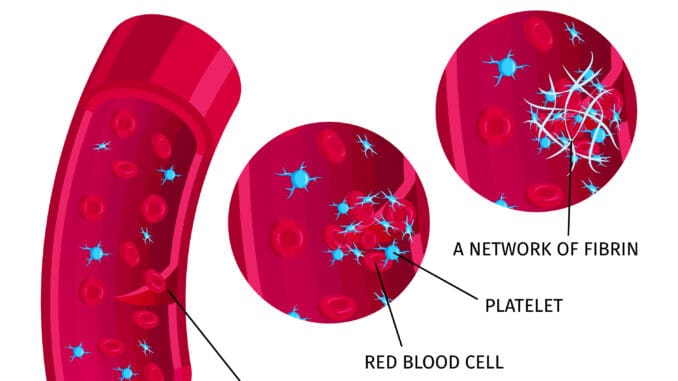
It’s essential to stress that if you suspect a blood clot—especially in the leg (DVT), lung (PE), brain (stroke), or heart—you should seek medical attention immediately. Untreated clots can be life-threatening. Below is a general overview of how clots are treated and dissolved under medical supervision and supportive steps you can discuss with your doctor.
1. Emergency & Medical Treatments
- Immediate Anticoagulation (“Blood Thinners”)
- Heparin (often intravenous or injectable): Rapidly prevents existing clots from growing and new clots from forming.
- Low-Molecular-Weight Heparin (e.g., enoxaparin): Injectable, often used in hospital or at home.
- Direct Oral Anticoagulants (DOACs) (e.g., apixaban, rivaroxaban, dabigatran): These are taken by mouth, and most patients transition to them after initial heparin.
- Warfarin: Oral, requires frequent blood tests (INR checks) to maintain the right dose.
- Thrombolytic (“Clot-Busting”) Therapy
- Alteplase (tPA) or similar agents can actively break down large, life-threatening clots (e.g., massive PE, acute ischemic stroke).
- Used only in carefully selected patients due to bleeding risk.
- Mechanical Removal (Thrombectomy/Intervention)
- Catheter-Directed Thrombectomy: A thin catheter is threaded into the vessel to remove or dissolve the clot physically.
- Surgical Thrombectomy: Rare; reserved for huge clots not amenable to other treatments.
- Inferior Vena Cava (IVC) Filter
- A small device is placed in the large abdominal vein (IVC) to catch clots before they reach the lungs.
- Used when anticoagulation is contraindicated or ineffective.
2. Supporting Measures & Lifestyle
While medical therapies do the heavy lifting, these steps support circulation and help prevent new clots:
- Compression Stockings
- Graduated compression stockings (knee- or thigh-high) help reduce leg swelling and avoid blood pooling.
- Mobility & Leg Exercises
- • Even in the hospital, bend and stretch ankles/feet every hour.
- • Take frequent short walks once cleared by your care team.
- Hydration
- Adequate fluids keep blood from becoming too viscous.
- Medication Adherence & Monitoring
- If you are on warfarin, keep all INR checks and dietary consistency (vitamin K intake). If you are on DOACs, take them exactly as prescribed.
3. Prevention of Recurrence
- Address Underlying Causes
- • Evaluate for clotting disorders (e.g., factor V Leiden).
- • Manage chronic conditions (cancer, heart failure, autoimmune diseases).
- Long-Term Anticoagulation
- Duration depends on whether or not the clot was provoked (e.g., surgery). Your doctor will determine if you need 3–6 months or indefinite therapy.
- Lifestyle Modifications
- • Maintain a healthy weight.
- • Avoid long periods of immobility (e.g., on flights, at the desk): stand and move every hour.
- • Quit smoking.
⚠️ When to Seek Help
- Sudden leg pain/swelling (especially one leg).
- New shortness of breath, chest pain, rapid heartbeat.
- Sudden numbness, weakness, slurred speech, or severe headache.
Call 911 or go to the nearest emergency department immediately if any of these occur.
Bottom Line: Blood clots require prompt, supervised medical treatment. If you suspect one, don’t wait—seek emergency care. Once treated, following your doctor’s plan for medications, monitoring, and lifestyle changes is the best way to “get rid of” a clot and prevent another.
